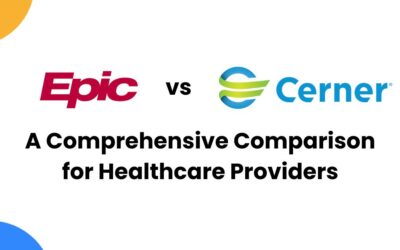How To Improve Clinical Workflow:4 Cool Tips
Improving clinical workflow may be a challenging task for today’s healthcare providers, particularly when industry regulations such as HIPAA (Health Insurance Portability and Accountability Act) are considered. But there are many opportunities to help practice in improving their workflow.
For example, if a patient visits a hospital, they will go through a lot of processes right from the admission to discharge. Usually, the patient finds all these tasks to be irritating and time-consuming. So here a hospital should find a smart way to streamline clinical workflow to save time and ultimately improve patient satisfaction.
Why Improving Clinical Workflow Is Important?
The secret key to improving practice revenue is improving clinical workflow in the right way. To get a clear view, the workflow is nothing but a process consisting of various tasks that need to be completed on time to achieve a specific goal. In terms of healthcare – it means the delivery of clinical services on time.
In the healthcare industry, most of the valuable resources are often underutilized. Even though there is a potential to automate some healthcare processes like payment collection, appointment scheduling, appointment reminders, still these tasks are conducted manually in some healthcare practices. It has been analyzed that nearly 40% of clinical office work involves repetitive tasks, more effort, and the clinicians are often spending most of their time on inefficient processes.
So improving clinical workflow eliminates repetitive works, saves more time, and allows healthcare practices to use their resources more efficiently to deliver better care for patients.
RELATED: POPULAR TIPS TO REDUCE NO- SHOW RATES EASILY
What May Affect The Efficient Clinical Workflow Process?
According to a recent survey, the American Society for Quality (ASQ) reported that, for nearly 78% of healthcare quality experts, improved clinical workflow and efficiency are the two primary keys to boosting health information technology quality. The usability of ineffective technologies for documentation and communication may be one of the reasons for efficient workflows.
So, efficient workflow process is a great opportunity to improve operations and clinical care. So what can healthcare providers do to improve clinical workflow process. Here are five ways to simplify clinical workflow processes.
4 Super Cool Tips To Improve Clinical Workflow
1. EHR Helps You To Improve Clinical Workflow
The health systems leaders are challenged to ensure technology investments are integrated to support the best patient experience. As the adoption rate of EHR continues to increase in the U.S healthcare marketplace, electronic health records help healthcare providers to deliver quality healthcare by improving clinical workflow.
EHR digitalize the patient health records and makes them available to the healthcare providers to access them anytime they want with full security. EHR not only benefits healthcare providers with better health outcomes but also benefits patients by minimizing their healthcare costs with easy to use EHR features. Overall,EHR implementation results in higher patient engagement and enhanced care coordination which also helps to improve clinical workflow.
2. Patient Intake Process Helps You In Improving Clinical Workflow
You can make your patient intake process as detailed as possible. Doctors can instruct patients to handle most of their administrative tasks before their next appointment. That way, a doctor can ensure a patient shows up prepared to make the consultation session as seamless as possible.
What Healthcare Practices Should Do?
Caregivers can instruct patients to fill an online patient intake form that allows them to ask all necessary questions before they make their appointment. You can include any information you need to speed up treatment and ensure quality healthcare.
3. Updating Communications Systems Is Must
The biggest barrier to productivity in healthcare is the reliance on outmoded communication methods such as pagers, faxes, landlines, and email. 80% of hospitals are still using fax machines, and email for communicating critical information. Even though faxing important health records can easily result in errors and delays in communication, almost half of the medical communication occurs only by fax.
These old techniques may cause frustration among doctors, nurses, and other hospital employees and result in a considerable amount of wasted time. Secure text messaging is much faster than paging, faxing, and email. Rather than having to rely on a landline or computer for communication, clinicians can communicate without being tied to one location.
What Healthcare Practices Should Do?
So, improving clinical workflow should therefore start with the replacement of these dated and inefficient communication methods and the introduction of a modern communication system conducive to efficient clinical workflow.
4. Adopting AI To Improve Workflow
Artificial Intelligence is one of the trending topics in the healthcare industry. As its benefits are more widely recognized, many healthcare organizations are started adopting AI to improve the clinical workflow process.
- AI has the potential to complete clinical documentation tasks with greater efficiency, such as extracting relevant information from a physician’s free-text narrative and inserting it into appropriate structured data fields.
- AI could replace manual data-collection processes by reviewing clinical documents and extracting information for quality reports and to populate missing data fields, saving physicians hours of work every week.
Final Thoughts
By implementing these super cool tips, the clinical workflow of your healthcare practice will be more efficient than ever. You’ll be surprised to see how much time and resources you are saving and results with better healthcare outcomes and increased productivity.




